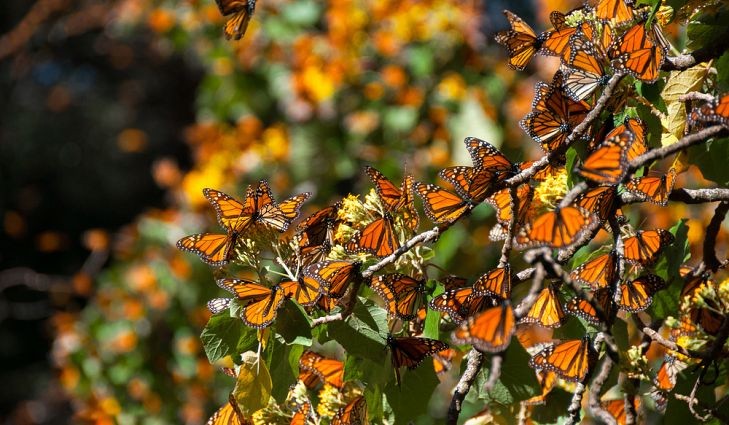Mexico's Monarch Butterflies May Face Extinction Due to Climate Change

The time of the migration of oranged-winged butterflies in North America and hillsides in Central Mexico is still unknown, but the one thing experts are sure of, is their migration is prompted by climate change.
Many have observed that millions of Mexico's monarch butterflies have migrated. For locals, they believed that these butterflies carry the souls of their ancestors but for the scientists, it is a proof of the evolution of the insect. Experts believed that butterfly can fly over 6,000 miles a year to avoid severe weather that can cause their extinction.
Butterflies are one of the world's oldest and most resilient species that are facing extinction due to climate change. However, butterflies can easily adapt to the change in the climate. They usually fly from one place to the other depending on the weather and climate. They spend their time in the following places:
- Butterflies spend their summer in the United States and Canada
- During spring and fall, they do their breeding in the United States
- They spend their winter in the few giant clusters in Central Mexico
In a report from MSN News, their migration depends on the weather and temperature condition. Usually, the ideal temperature where butterflies migrate is when the temperature is between 55 and below 70. They mate during winter season where there are some rain and plenty of milkweeds. However, this consistency no longer exists anymore due to the evolution of the insect.
The question that lies now is "Can the world's most adaptive insects adapt to climate change?" This is the question that Karen Oberhauser raised. She works at the University of Wisconsin where she also presently studies the species.
According to the U.S. and Wildfire Service, billions of butterflies vanished in the period between 1990 and 2015. This is because 95 percent of the butterflies migrated en masse in the Mexican forest and each group which is smaller than a football field can be killed immediately by a single storm of heatstroke.
In 2002, around 75 percent of the monarchs were killed due to the winter storm and it happened again in 2012 where tens of thousands were killed in the Midwest due to the heatwave. The monarch butterfly coordinator for the World Wildlife Fund in Mexico Eduardo Rendon said: "At every stage in their migration, they are threatened by climate change."
In 2019, the population of the monarchs spiked due to the cold front in North Texas that forced the monarchs to stay longes in South Texas and increase the length of their breeding season. However, this year is forecasted to be a bad year for the monarchs because the temperature in Oklahoma and Kansas are soaring.
According to Chip Taylor, founder of Monarch Watch and a present professor at the University of Kansas, said that "If you're talking 20, 30, 40 years out, we're not going to be talking about monarchs any more," Extinction is a serious issue. In February last year, Australia declared the extinction of Bramble Cay due to climate change. This might happen soon for Mexico's monarchs if climate change will not be addressed worldwide.
Lincoln Brower who is expert on species, said "The monarch's overwintering colonies in Mexico rank as one of the great biological wonders of the world," The worst report ever published this year is a report from the United Nations where they said that there is a possibility that 1 million species of plants and animals may face extinction in just a decade and that includes the monarchs.
Subscribe to Latin Post!
Sign up for our free newsletter for the Latest coverage!
© 2026 Latin Post. All rights reserved. Do not reproduce without permission.













